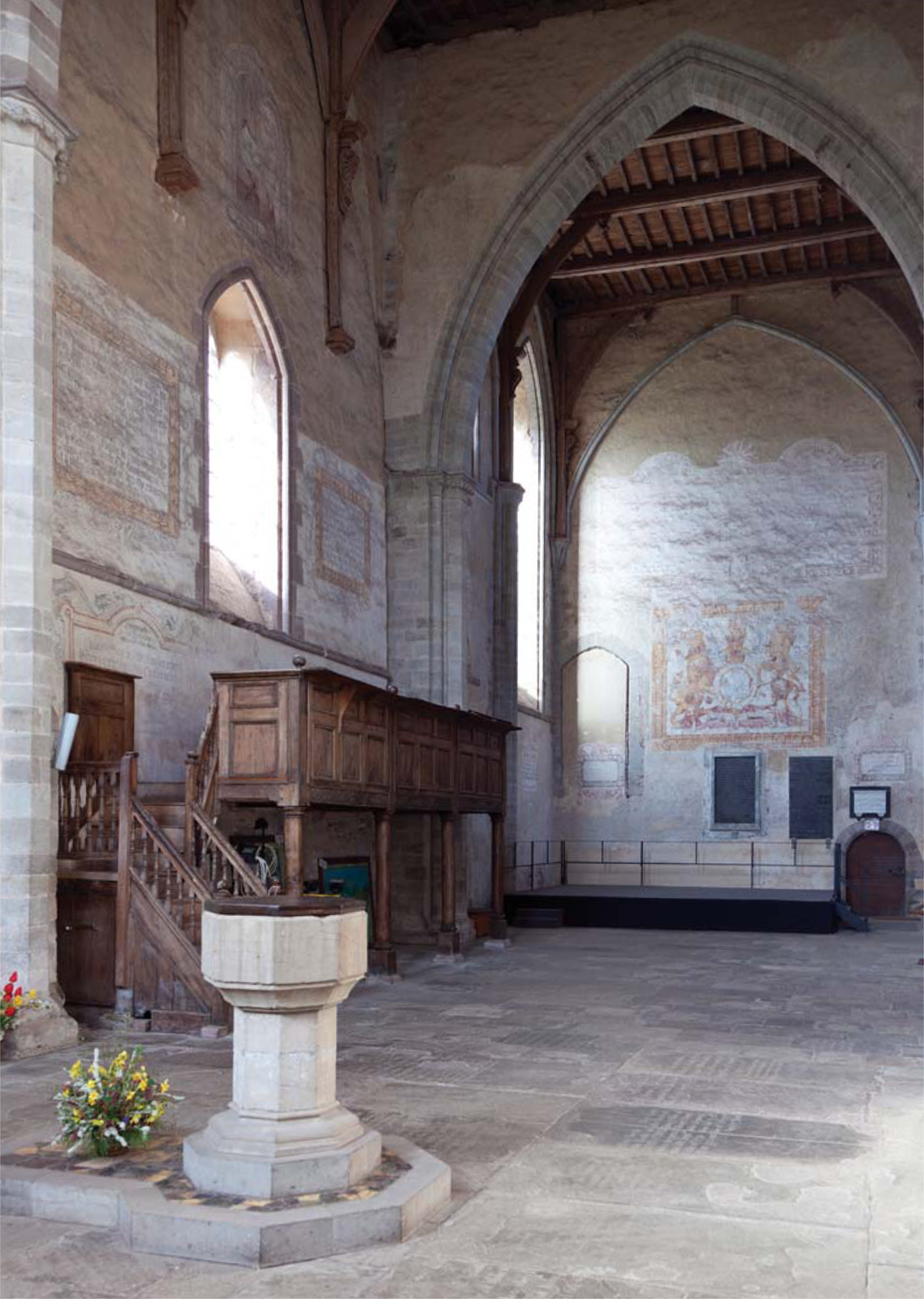
IN ADDITION TO THE FOUR MAIN ORDERS, a number of diverse quasi-monastic orders proliferated from the eleventh century onwards, providing opportunities for patrons to endow a new wave of monasteries. Known as Canons Regular, these orders consisted of priests who lived together in abbeys and priories while at the same time undertaking pastoral duties in the outside world. Unlike those who followed the Regula Benedicti, they based their lives on a series of short letters written by a fifth-century Bishop of Hippo (now Annaba, Algeria), usually known as the ‘Rule of St Augustine’ (Regula Sancti Augustini). Rather than providing a detailed handbook of communal life, these treatises focused on the spiritual life of the community and were less severe than for those in monastic orders. The Augustinians arrived in England in c. 1106 and at the height of their appeal had over two hundred houses, including fifteen nunneries. The present-day cathedrals of Bristol, Oxford, Portsmouth and Southwark were originally Augustinian foundations; nunneries included Lacock (Wiltshire). Their first house in Wales was at Llanthony in the Black Mountains. While many canons were active in parish churches and founded hospitals such as St Thomas and St Bartholomew in London, a few imitated the monastic life and had hardly any pastoral contact with lay people.
A related variant from this Order was the Arrouaisian Order of Augustine Canons, so-called after the Abbey of Arrouaise in northern France where it was founded in the 1130s. As admirers of the Cistercians, they wore white instead of the black of most Augustinians. They founded Dorchester Abbey (Oxfordshire), Lilleshall Abbey (Staffordshire), and a priory in Carlisle which was given cathedral status in 1133.
Another offshoot was the Trinitarian Canons for the Redemption of Captives, who raised money to pay ransoms for Christians kidnapped by pirates. They had twelve houses in England, all small.
The second most important and numerous of the groups of Canons Regular, the Premonstratensian or Norbertine canons, were the creation of St Norbert of Xanten (c. 1080–1134), of the Abbey of Prémontré, near Laon, 75 miles east of Paris. Norbert was a friend of Bernard of Clairvaux and his Order combined Augustinian rule with some of the characteristics of the Cistercians. The Premonstratensians arrived in England in 1130 and eventually established thirty-one abbeys, including Shap (Cumbria), Torre (Devon), Titchfield (Hampshire), and Halesowen (West Midlands).

Canopy of the shrine of St Edbergh (c. 1294–1317), from Bicester Priory (Augustinian: Oxfordshire), now in the parish church of St Michael, Stanton Harcourt (Oxfordshire).
Yet another order, the Gilbertines, was the only religious order exclusive to England. The origin of the order lay in the founder’s desire to provide double houses for canons and nuns. St Gilbert’s first house was at Sempringham (Lincolnshire); the second at Haverholme, near Sleaford (Lincolnshire). He was also a great admirer of the Cistercians and wanted to cede his communities to that Order but the French declined to admit the Lincolnshire women. Nine double monasteries and four houses of canons were founded in his lifetime. After his death in 1189 only two more nunneries were founded and the remaining foundations were restricted to canons only.
In 1415 Henry V endowed Syon Abbey at Isleworth (Middlesex), a monastery for nuns of the Bridgettine Order, an offshoot from the Augustinians founded in Sweden in 1350.
There were also several Military Orders – the Knights Templar and the Knights Hospitallers – who maintained ‘preceptories’ or ‘commanderies’ (church and living quarters) in Britain while concentrating their efforts in the Middle East.
Although not monks, another important religious group of people who shared communal lives were the mendicant friars, who depended on charitable gifts and devoted their lives to preaching. Although friaries followed the usual monastic plan, with a large church and a range of buildings arranged around a central cloister, including a refectory and dormitory, their inhabitants were active in local communities. The first friars to arrive were the French Dominicans (‘black friars’) in 1221. Thereafter Italian Franciscans (‘grey friars’) landed in 1224, followed by the Carmelites (‘white friars’) in 1242. The Austin (Augustinian) Friars also reached England in the 1240s. By the 1530s there were fifty-three houses of Dominicans in England, sixty houses of Franciscans, thirty-seven houses of Carmelites, and thirty-four houses of Austin Friars. There was also one priory of Dominican nuns and three of Franciscan nuns. The latter are sometimes called Minoresses, as female members of the Order of Friars Minor, the official name of the Franciscan Order founded by St Francis of Assisi (c. 1181/2–1226), or ‘Poor Clares’, officially the Order of Saint Clare, an exclusively female order founded by St Clare of Assisi (1194–1253), a follower of St Francis.

The thirteenth-century interior of Dore Abbey looking towards the north transept (Cistercian: Abbey Dore, Herefordshire).